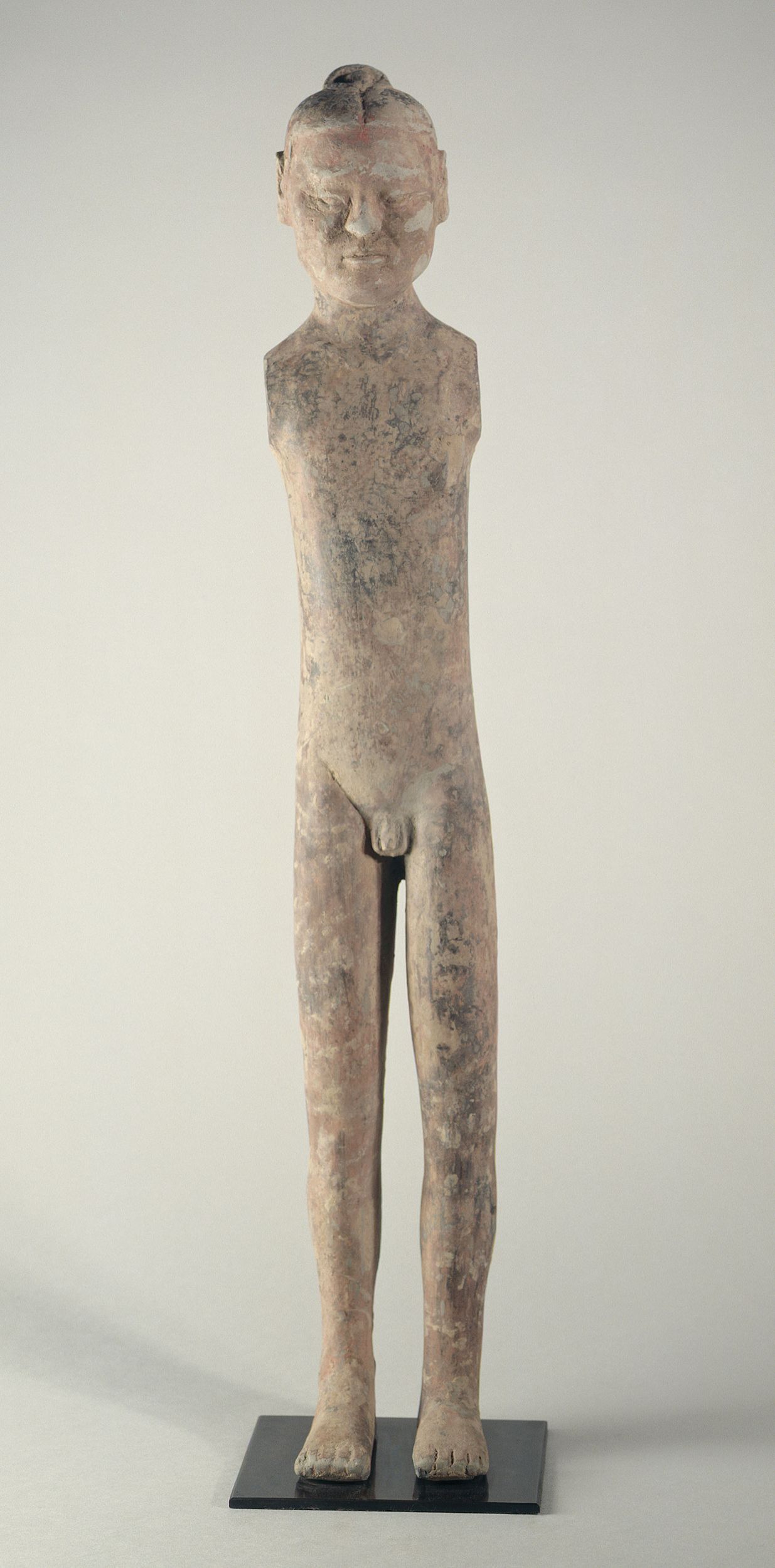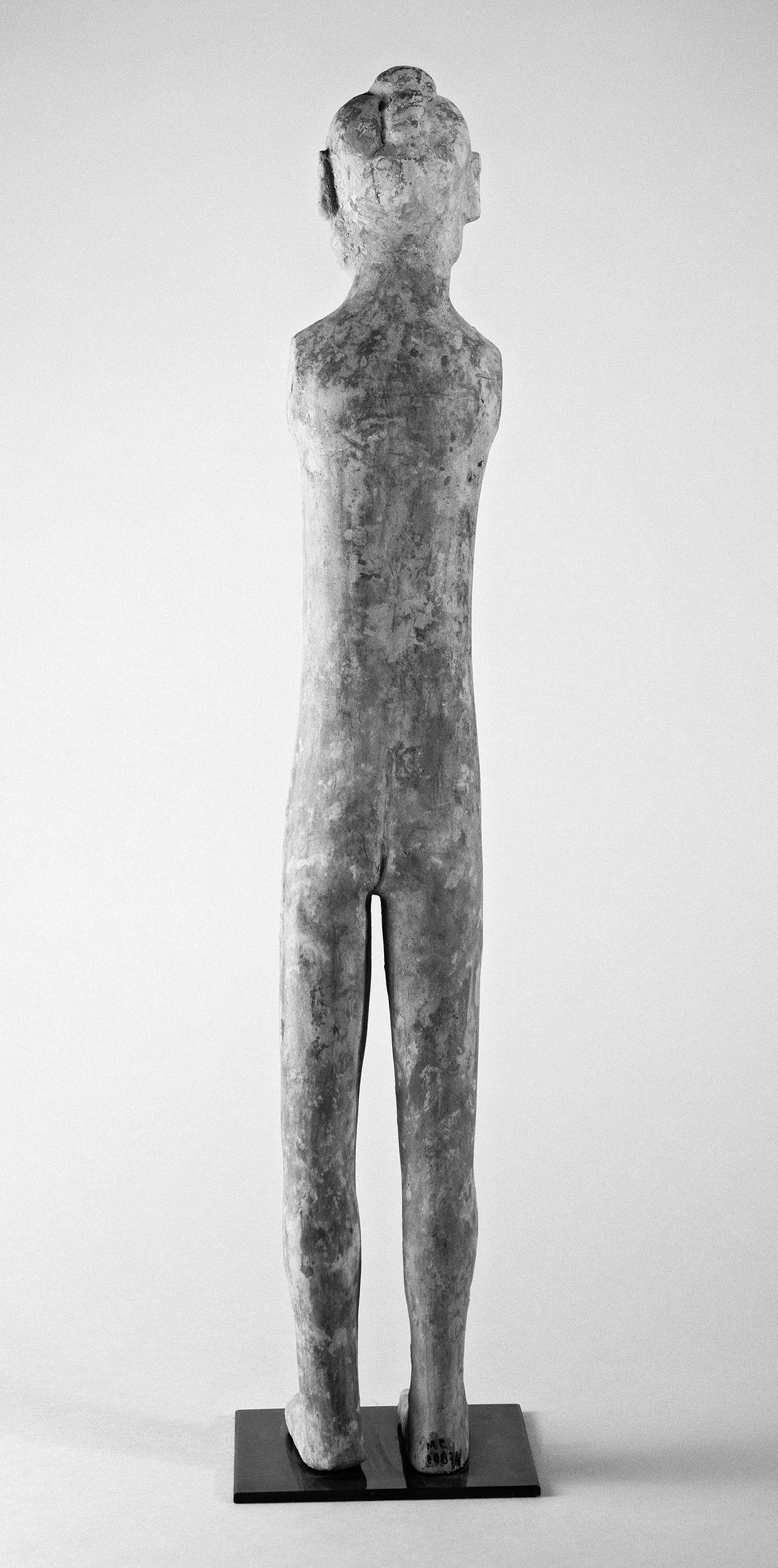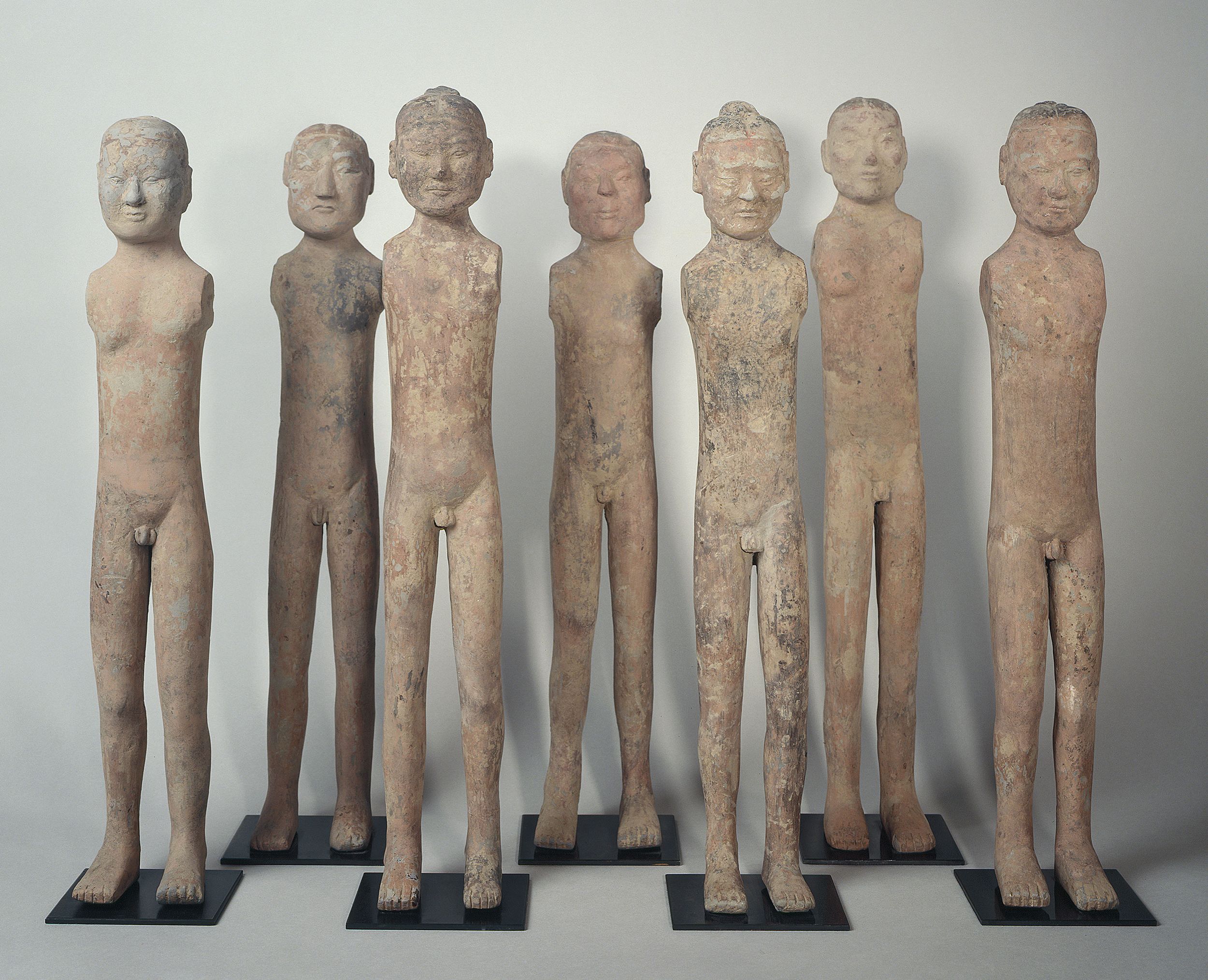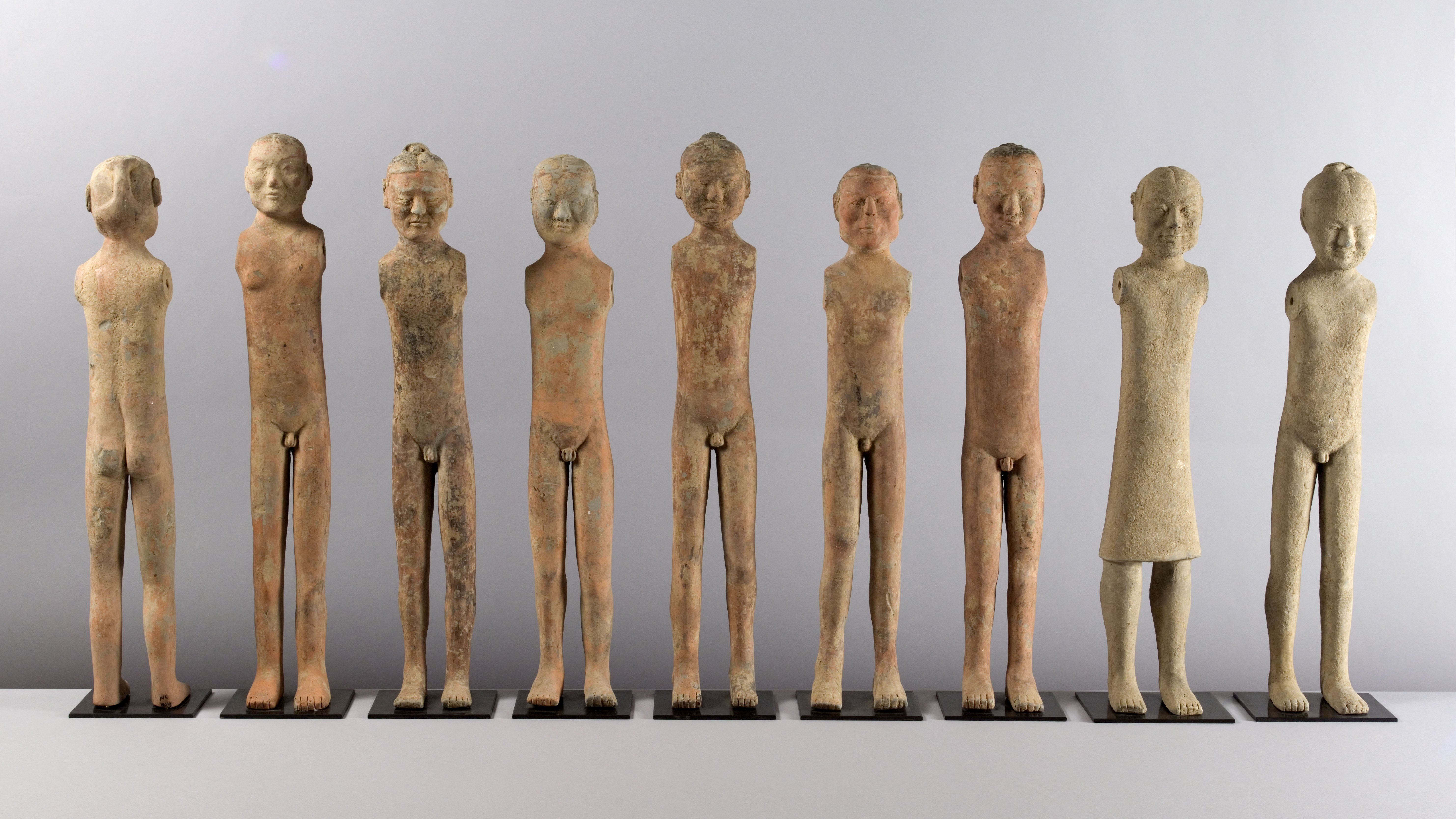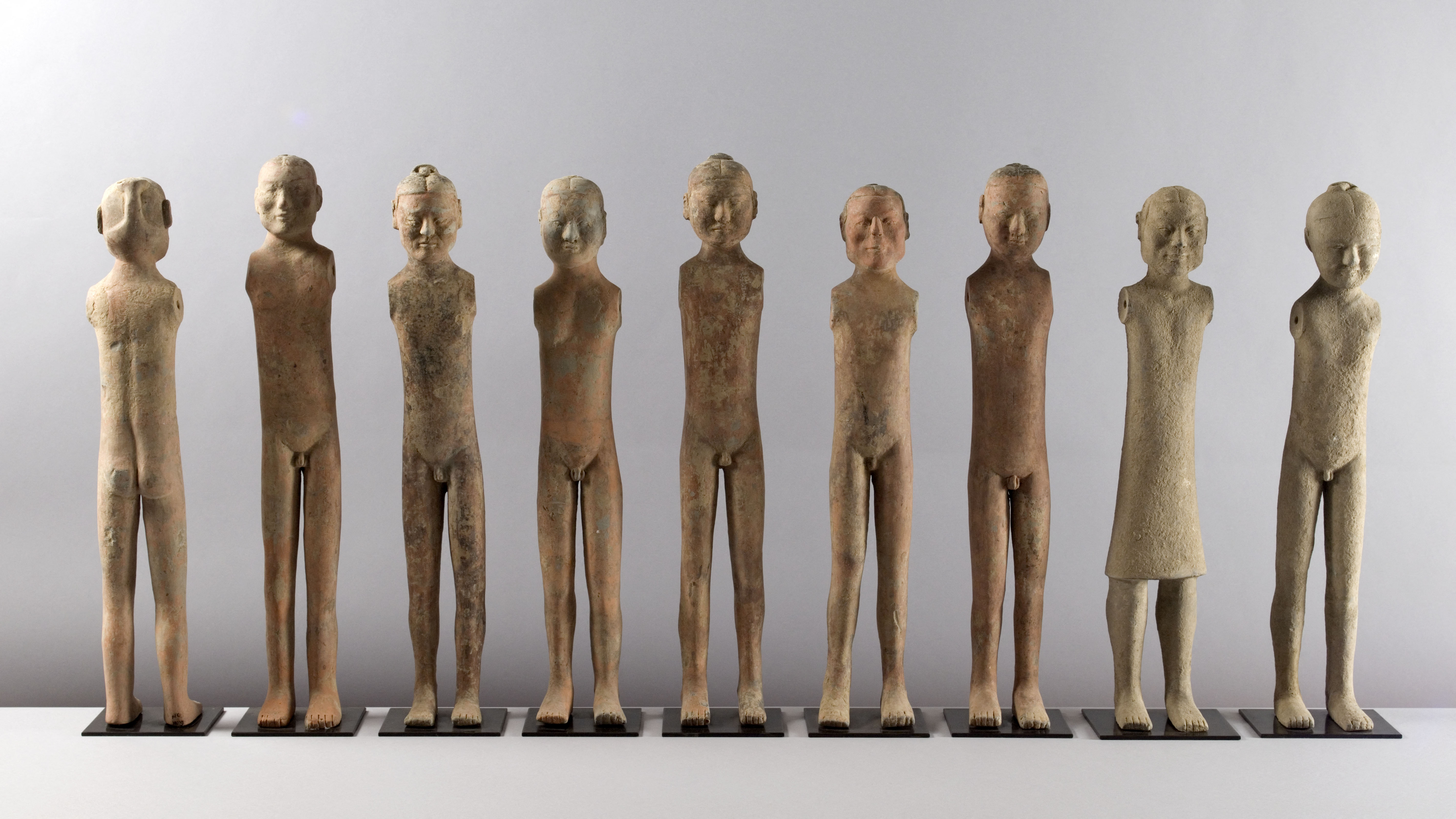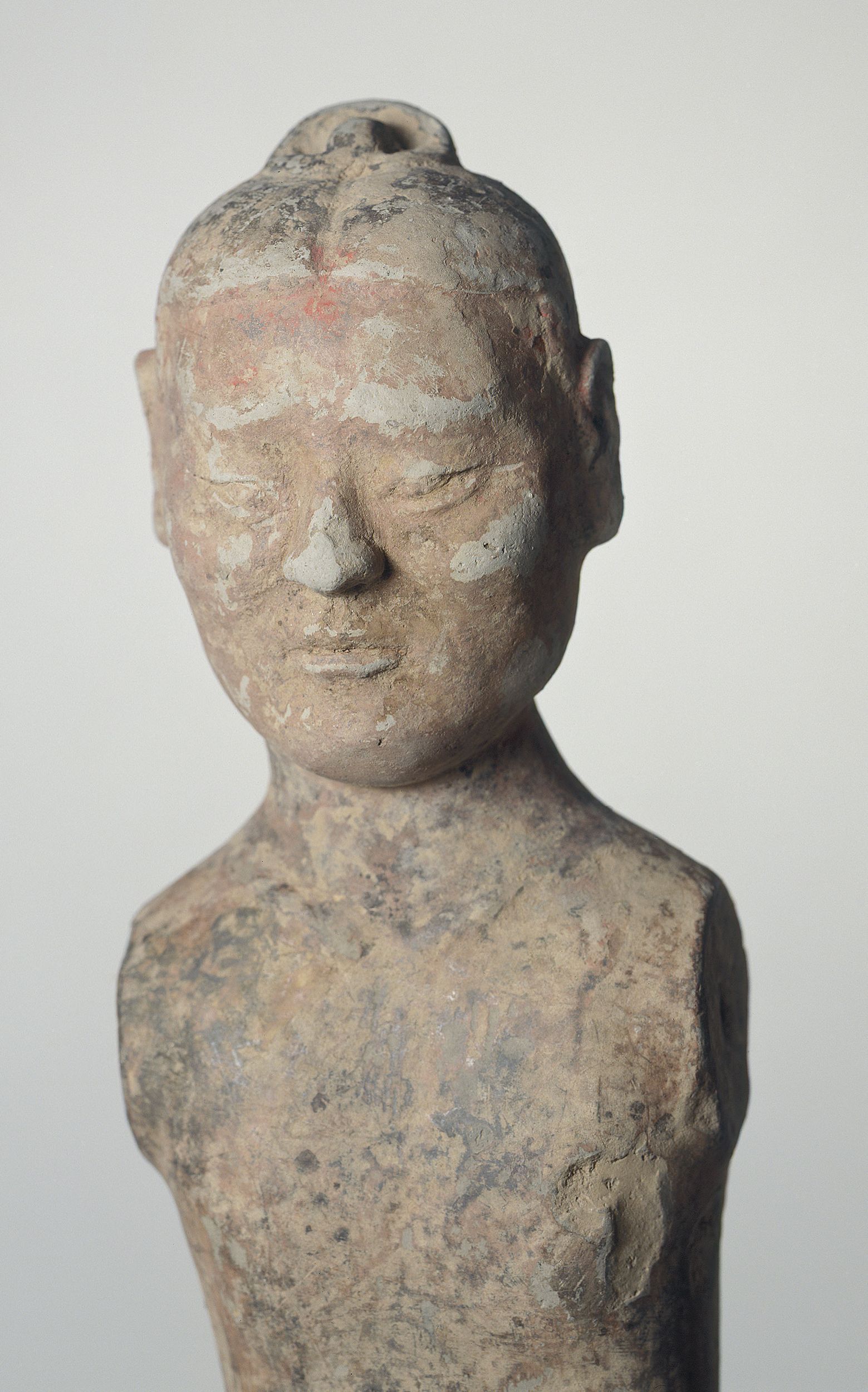
Personnage masculin
Terre cuite, Moulage, Polychromie
Statuette, Mingqi
Don manuel : Held, Suzanne
M.C. 10034
These terracotta statuettes have partially conserved their flesh-coloured polychrome. They were nude but once wore real clothes and armour. Articulated wooden arms would have hung from their perforated shoulders.
Valuable information was provided by excavations carried out from May 1990 in Yangling, extending into the town of Xianyang and the districts of Jingyang and Gaoling (Shaanxi), near the tomb of Emperor Jingdi (r. 157-141 BC) of the Western Han dynasty (206 BC – AD 9). Thousands of such effigies were found placed together in pits, constituting regiments protecting access to the tumulus. The earth in which these infantrymen were encased sometimes bore the imprint of their lamellar armour, a textile tunic and leg bindings.
The statuettes donated by Mme Suzanne Held, acquired over the years on her personal whims whenever one came onto the market, do not form a coherent group. Variations in their dimensions and facial features, sometimes fine and distinguished, sometimes coarse, with prominent cheekbones, can be explained by their diverse provenances. Nevertheless, they provide a glimpse of the armies that, in the Qin period (221-207 BC) and Western Han period (206 BC – AD 9), watched over the resting place of rulers and their families.
Art chinois, Musée Cernuschi, acquisitions 1993-2004, Paris-Musées/Editions Findakly, 2005, p. 71-72.
